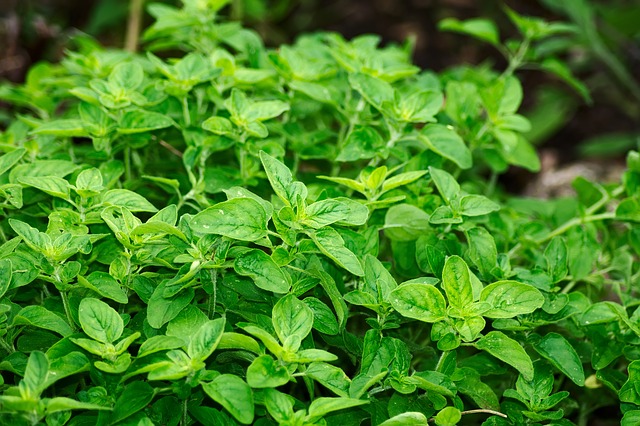When the first greenery grows in the beds, fields, gardens and forests, I really want to preserve the beauty, or at least the aroma and taste for a long time. Delicious ways of harvesting herbs according to original recipes.
There are several ways to do this. Which herbs are good to dry, so that later, in winter, add it to soups and stews. Other greens can be salted, and then it will become an excellent side dish, the basis for pies and soups. Herbs with a strong aroma can be pickled, and it will be a bright snack. And almost any greens can be turned into powder, which is great to decorate food, or make pesto out of it — a universal sauce that will help out for better or for worse.
How to dry healthy herbs? Delicious ways of harvesting herbs according to original recipes.
It is best to dry spicy herbs — dill, parsley, basil, cilantro, mustard grass and so on. Those herbs that we add to the dish primarily for flavor. They are rich in essential oils.

It’s easy to dry. The grass needs to be slightly wetted — just lightly sprinkle with water, let it lie down for a little 30 minutes, and then pass through a meat grinder. The rolled grass should be sent for an hour and a half in a dehydrator or in an oven preheated to 140-158F. And then the oven temperature should be lowered to 95–104F and keep the greens there until all the moisture comes out of it.
If there is no oven and dehydrator, and it’s hot outside, then you can dry it somewhere in the attic in warm weather. And if you have rosemary, thyme or thyme, initially dry grass with a hard stem, then it can be dried directly on a twig. Just pluck the twigs and spread them out on paper in a dry, warm place. They will wither on their own.
In order for dry greens to retain the maximum of their healthy properties and taste, dry them at a temperature of 95F in a ventilated room, away from direct sunlight. The lower the temperature and the less UV exposure, the better. Here, for example, in an attic or a drained terrace. Wash, dry from moisture, finely chop, put on a dry clean surface and dry.
And there is another interesting drying method — it is a little more complicated, but the greens turn out beautiful and you can decorate the dish with it. Take a deep plate, wrap it with a film so that the film on the top of the plate is tightly stretched. Lubricate the film with vegetable oil. Then take large leaves of parsley, dip them in vegetable oil and spread them carefully on this film.
Straighten each leaf so that it does not come into contact with anything. And in this form, send it to the microwave, turned on at medium power. Dry it until it crunches and then decorate, for example, salads with these thinnest chips. But it’s inconvenient to store greens for a long time, it’s more like a few days in advance, not in reserve.
How to freeze herbs? Delicious ways of harvesting herbs according to original recipes.

The only thing is that you can freeze seasonal wild greens that you can’t buy in the supermarket in winter. For example, nettles or other wild plants. But we must understand that after freezing it will be suitable only for soups. You need to freeze carefully: put the dry greens in a vacuum bag and only in this form send them to the freezer. If the greens, while in the freezer, will come into contact with the air, it will immediately absorb all the flavors of the freezer. And this instantly makes the product inedible.
How to pickle greens?
It is good to pickle wild herbs or any other edible bright herbs — those that, having given the marinade part of their taste, will not fade. Everything is very simple with marinade. First, combine together 4 cups of water, 2 teaspoons of salt and a teaspoon of acetic essence, boil the mixture.

Then take, for example, 34.92oz of pure garlic arrows put in a jar and pour this hot marinade. Ready! You can store these cans in a dark, cool place or in the refrigerator. All the same rules of preparation and storage, as in pickles and tomatoes.
How to salt and pickle greens?
Theoretically, any herb can be salted, crushed, filled with brine, and lactic acid bacteria will do their job. But you always need to take into account the amount of moisture and sugar in the grass and its density. And also remember that the taste of the herb changes a lot during fermentation.
You can pickle garlic mustard, nettles, green onions, garlic arrows, rapeseed leaves. You can fermitate asparagus. Try not to miss the season and ferment the young leaves of cherry, birch and black currant.

There are two main methods of fermentation — pickling in brine and dry. Both have the main rule: minimal contact with air. Or the greens should be completely covered with brine. Or it is isolated from the air with the help of brine, tightened with starch to the state of jelly.
Absolutely everything can be fermented in brine. The grass needs to be crushed, salted and left for a while so that the juice begins to stand out. Then wash off the salt and pour the greens with brine. The standard is 2-3% salt in brine. But if the grass is sweet and juicy, then you should add up to 4% salt. For example, wild cherry – 4% brine, and nettle — 2.5%. The greens need to be tightly packed in a jar so that a small distance to the lid. Then pour the brine under the lid, install a pressure and a hydraulic lock to drain excess gas. There is another way: you can take a zip-bag with brine and insert it into the neck of the jar. Then it will be a yoke and displace most of the air.
Very juicy greens are needed: under the influence of the salting mixture, water will come out of it and completely cover the product. Greens can’t just lie in a jar with air, then they will certainly spoil. Therefore, it needs to be coated with brine, condensed starch. If you want, you can add some spices to this jelly. For example, it is so good to dry the green onion: salt it, let it lie down, and then put it in the jar as tightly as possible so that there is no air between the bundles. Perhaps the top layer will have to be sacrificed in this case — it may deteriorate.
Ideal conditions for fermentation 68-71.6F, dry and cool place. The finished product can be stored in the refrigerator closed with brine for about 6 months.
Recipe. Delicious ways of harvesting herbs according to original recipes.
Sorrel, nettle, primrose and asparagus are excellent for salting. These are all herbs with an interesting and fragile taste — their aroma is easily lost during drying. Their taste, unfortunately, will drown out the marinade. But their delicate taste and aroma will easily survive salting. It’s easy to do.

Take 34.92oz of clean, dry, picked herbs and 2 teaspoons of salt. Remember this herb a little bit along with the salt so that its structure is slightly broken, the salt is absorbed and the juice goes. Then put the grass under the press at room temperature for about an hour. Then tamp it very tightly into the jar, under the lid, and send it to the refrigerator. This herb will be an excellent base for soups, pies, various stews, and just a side dish if you gently fry it in butter.
In addition, you can pickle herbs to use them as a seasoning later. For example, a jar of seasonings from salted dill, parsley, cilantro that can be added to the dish. Then you will need more salt 1 tablespoon per 34.92oz of grass.
How to make pesto?
Pesto is good to make from bright tasty grass, because it is the main ingredient there. It is best to take a proven combination of green basil and parsley.
Ingredients for 20 servings:
Green basil (leaves) 10.58oz
Olive oil 1 cup
Pine nuts 3.53oz
Parmesan cheese 3.53oz
Garlic 2 cloves
Ground black pepper 1/2 teaspoon
Lemon juice 1 teaspoon
Coarse salt to taste
Instruction:
To make basil pesto sauce, we only need leaves, they need to be well washed and dried. Put garlic and roasted pine nuts in a blender, grind until smooth for 10 seconds. Add the basil leaves and chop, do not beat for a long time.
Gradually add olive oil, lemon juice and finely grated parmesan. Mix quickly until smooth. It is not necessary to mix the sauce for a very long time.
Add salt and pepper. Be sure to try the sauce. If the cheese is salty, add less salt to the sauce than the specified amount, to taste. If you want to keep the sauce longer, then add 2 teaspoons of lemon juice and put the sauce in sterilized jars, close with sterilized lids. Enjoy your meal!
How to make powder from greens. Delicious ways of harvesting herbs according to original recipes.
Powder practically does not give taste, but it effectively decorates the dish. And since we focus on color, then making basil and spinach powder will turn out to be a wonderful bright shade. And I do not advise using dill or parsley for this at all — it will be a pale, soft shade. In addition, dried dill and parsley often acquire the taste of old greens.
You can wash the greens first, but it’s better not to do this — so it will absorb excess moisture, which we just need to get rid of. Finely chop the leaves or arrange them into twigs and send them to the oven, preheated to 122F. Dry until all the moisture comes out of the greens. Get ready for the fact that it may take about six hours: it all depends on the density of the leaves and on the initial juiciness of the raw materials.

Then punch the dried leaves in a blender to the state of powder, which should be put in a paper bag or in a hermetically sealed jar. If such a powder is added to a vegetable salad, it will acquire a velvety, cool, saturated color. Or try using it as a dye — for example, mix the powder into mashed potatoes. Enjoy your meal!



